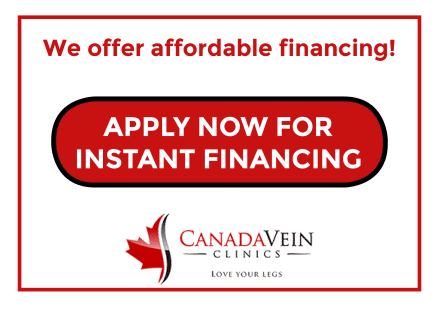Years of working on a production line, supervising children, waiting on customers and caring for patients takes a toll on your legs. A typical work shift is anywhere from four to eight hours long. Imagine how much standing we do in that time. But the constant standing doesn’t stop there. When we get home, we often stand for long periods of time in one stagnant position washing dishes, cooking dinner, eating, drinking and waiting. On average, each of us spends more than four hours per day just standing, and many are unaware that this behavior may have serious side effects on their legs. Standing for long periods of time on a regular basis is one of the leading causes of varicose veins.
We have all felt it before: the slight aching, restlessness and pain after having been on our feet all day. Just because this feeling has become a normal sensation throughout the week, does not mean we should ignore the signs our body gives us. Varicose veins may start as an unpleasant aesthetic addition to the surface of the skin, but they can lead to, or be indicative of, other venous conditions deep within the legs. To understand why we’re more prone to developing varicose veins while standing, we should understand how veins work.
Function of Healthy Veins
Veins are essential to the body’s circulation. The heart pushes oxygen-saturated blood throughout the body so that we can perform the necessary functions of life. Our muscles need oxygen to move properly (relax and contract) without stress and atrophy, and the brain needs 20% of that oxygen daily. So we’re constantly pushing blood to and from the heart via the arteries and veins. After all the oxygen in our blood has been taken up by the tissues, and the brain, the blood must circle back to the heart to pick up new oxygen molecules once again. It’s a never-ending cycle, and trust us–you want it that way.
Standing too much will knock you down.
Standing has many adverse effects on the body that can raise our risk of stroke, blood clot formation, back pain, inflammation of the heels, fatigue and so much more. As we remain in one position, our blood starts to pool in the feet, ankles, and calves. Swelling is a common side effect of pooling blood and varicose vein formation.
Symptoms of Varicose Veins:
- Swelling in the legs, ankles and feet
- Itching
- Burning sensation
- Restless legs
- Color change in the skin
- Heaviness or aching in the legs
Who is affected by varicose veins?
Women are often more affected by varicose veins than anyone else. This has to do with hormones and the dynamic nature of their bodies, as they stretch and adapt to the raised amount of bodily fluids: blood, plasma, and water volume. As women become pregnant, the chance of developing varicose veins is higher. Standing for prolonged periods of time for pregnant women can be detrimental to the fetus as well since blood needs to travel upward to the uterus.
Varicose veins can also be inherited if your parents had them, regardless of your gender. Standing occupations such as those in hospitals can bring on varicose vein formation if we’re not careful and aware of blood movement and the effect of gravity.
Treatment Options for Varicose Veins
Canada Vein Clinics is known all over Canada for state-of-the-art varicose vein treatment. We offer a variety of painless and quick outpatient procedures performed by a pioneer in the field of Phlebology, Dr. Alexander Matz. We treat our patients with compassion and don’t simply treat your venous issues as cosmetic, but medical conditions we can remedy, usually under an hour. Our treatments include VenaSeal, Sclerotherapy, Mini-Phlebectomy, Endovenous Laser Therapy, and ClariVein treatment.
Contact Canada Vein Clinics to schedule your consultation! Tell us about your lifestyle, and we’ll recommend an effective treatment to keep you happy, healthy and thriving.

